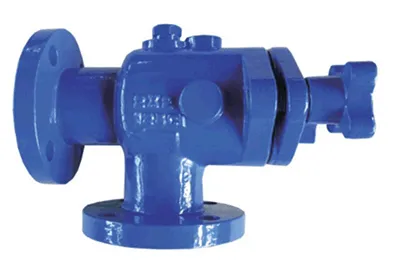Nov . 13, 2024 19:20 Back to list
y type strainer
Understanding Y-Type Strainer A Key Component in Fluid Systems
In the world of fluid mechanics, maintaining the purity and efficiency of fluid systems is crucial for their optimal performance. One of the devices that play a significant role in achieving this is the Y-type strainer. This article explores the design, functions, applications, and advantages of Y-type strainers, highlighting why they are integral to various industries.
What is a Y-Type Strainer?
A Y-type strainer is a mechanical device designed to filter out debris and particles from fluids in pipeline systems. The name Y-type comes from the shape of the strainer, which resembles the letter Y. This design allows for easy installation and maintenance, making it a preferred choice in various applications. The strainer typically consists of a body, a straining element (or mesh), and a few connections for the inlet and outlet.
How Does It Work?
The Y-type strainer operates by directing the fluid flow through its straining element. As the fluid enters the strainer, larger particles are trapped by the mesh filter, while the clean fluid continues through the outlet. This process prevents dirt, rust, and other contaminants from entering sensitive components within the hydraulic or fluid system, such as pumps, valves, and heat exchangers. Regular cleaning or replacement of the straining element is necessary to ensure optimal performance.
Applications of Y-Type Strainers
y type strainer

Y-type strainers are widely used across various industries, including water treatment, oil and gas, pharmaceuticals, and food and beverage. They are essential in applications where maintaining fluid purity is critical. For example, in water treatment plants, Y-type strainers help in preventing clogging and damage to pumps and other equipment, ensuring a steady flow of clean water. In petroleum processing, they protect valves and pumps from abrasive contaminants, reducing maintenance costs and downtime.
Advantages of Y-Type Strainers
One of the primary advantages of Y-type strainers is their compact design, which allows for installation in tight spaces. Furthermore, their ease of maintenance is a significant benefit; users can clean or replace the straining element without needing to disconnect the strainer from the pipeline. Additionally, Y-type strainers are available in various materials, including stainless steel, bronze, and plastic, making them suitable for different fluid characteristics and environmental conditions.
Moreover, the Y-type strainer can effectively handle high flow rates and is designed to minimize pressure drop across the strainer, which is crucial for efficient system operation. Their versatility and reliability make them an indispensable component in many fluid handling systems.
Conclusion
Y-type strainers are a vital component in ensuring the efficiency and longevity of fluid systems. Their ability to filter out contaminants while remaining easy to maintain enhances their appeal in various industries. Investing in a high-quality Y-type strainer is an effective way to safeguard equipment, reduce maintenance costs, and ensure the smooth operation of fluid systems. As industries continue to evolve, the demand for reliable filtration solutions like the Y-type strainer will undoubtedly remain high.
Share
-
Reliable Wafer Type Butterfly Valves for Every IndustryNewsJul.25,2025
-
Reliable Flow Control Begins with the Right Ball Check ValveNewsJul.25,2025
-
Precision Flow Control Starts with Quality ValvesNewsJul.25,2025
-
Industrial Flow Control ReliabilityNewsJul.25,2025
-
Engineered for Efficiency Gate Valves That Power Industrial PerformanceNewsJul.25,2025
-
Empowering Infrastructure Through Quality ManufacturingNewsJul.25,2025


